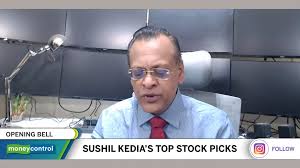news
Hindustan Aeronautics Ltd: ALH Army and Air Force Versions Cleared for Operations
Stay updated with the latest stock market news on Hindustan Aeronautics Ltd as their ALH Army and Air Force versions are cleared for operations.

Introduction
In the ever-evolving world of the stock market, staying informed about the companies you invest in is crucial. One such company that has been making waves recently is Hindustan Aeronautics Ltd (HAL). Known for its significant contributions to India’s aerospace and defense sectors, HAL has recently been in the news for clearing its Advanced Light Helicopter (ALH) Dhruv Army and Air Force versions for operations. This significant development is not just a feather in HAL’s cap but also an indicator of potential movements in its stock prices. Let’s dive deeper into what this means for investors and the broader market.
About Hindustan Aeronautics Ltd
Hindustan Aeronautics Ltd, a Maharatna Central Public Sector Enterprise, has been at the forefront of India’s aerospace industry. With a rich history dating back to its inception, HAL has continuously evolved, playing a pivotal role in defense and aerospace advancements. The company is headquartered in Bangalore and is known for its expertise in designing, developing, manufacturing, and maintaining aircraft and helicopters. Its recent developments, including the clearance of the ALH Dhruv variants, highlight its commitment to innovation and excellence.
Advanced Light Helicopter (ALH) Dhruv – A Game Changer
The ALH Dhruv has been a significant milestone in HAL’s journey. Designed for both military and civil applications, the helicopter is known for its versatility, high-performance capabilities, and reliability. The recent clearance of the Army and Air Force versions for operations is based on the recommendations of the Defect Investigation Committee, ensuring that these helicopters meet the highest standards of safety and performance. This development is expected to boost HAL’s reputation and could positively impact its stock market performance.
Impact on Stock Market
The clearance of the ALH Dhruv versions is a positive development for HAL, and its implications on the stock market can be significant. Here are some potential impacts:
- Investor Confidence: The successful clearance of the ALH Dhruv versions is likely to boost investor confidence. It showcases HAL’s capability to address and resolve technical issues, which is crucial for maintaining trust among stakeholders.
- Market Speculation: Positive news often leads to increased market speculation. Investors anticipating a rise in HAL’s stock prices might increase their holdings, leading to heightened trading activity.
- Long-term Growth: The operational clearance of these helicopters could pave the way for more orders from the Indian defense forces and potentially from international clients, contributing to HAL’s long-term growth.
Future Prospects for HAL
Looking ahead, the future seems promising for Hindustan Aeronautics Ltd. With a robust order book and ongoing projects, the company is well-positioned to capitalize on the growing demand for advanced aerospace and defense solutions. The clearance of the ALH Dhruv helicopters is just the beginning. HAL’s ongoing efforts to innovate and expand its product line are likely to keep it at the forefront of the industry. Additionally, potential collaborations and partnerships could further enhance its market presence.
Investing in HAL: What Investors Should Know
For potential investors, Hindustan Aeronautics Ltd presents a compelling opportunity. Here are a few things to consider:
- Strong Government Backing: As a Maharatna CPSE, HAL benefits from strong government support, which can provide stability to its operations.
- Committed to Innovation: HAL’s focus on research and development ensures that it remains a leader in aerospace technology.
- Steady Revenue Streams: With long-term contracts and a diverse product portfolio, HAL enjoys steady revenue streams, mitigating risks associated with market fluctuations.
Investors should carefully assess these factors and consider consulting financial advisors to make informed decisions about investing in HAL stocks.
Conclusion
In conclusion, Hindustan Aeronautics Ltd’s recent clearance of the ALH Dhruv Army and Air Force versions for operations marks a significant milestone for the company. This development not only enhances HAL’s reputation in the defense sector but also presents potential opportunities for investors. As the company continues to innovate and expand, its stock market performance is one to watch closely. For those interested in the aerospace and defense sectors, HAL offers a promising investment avenue. Stay tuned to keep track of further updates and developments from Hindustan Aeronautics Ltd.
For more detailed information, you can visit the official Hindustan Aeronautics Ltd website.
news
Senores Pharmaceuticals Acquires ANDA for Topiramate Tablets
Senores Pharmaceuticals acquires ANDA rights for Topiramate HCl tablets from Wockhardt to expand its US portfolio, targeting epilepsy and migraine markets.

Introduction: A Strategic Leap for Senores Pharmaceuticals in the US Market
On May 5th, 2025, **Senores Pharmaceuticals Limited (SPL)** took a major stride in strengthening its US generics portfolio by acquiring the **USFDA-approved Abbreviated New Drug Application (ANDA)** for **Topiramate HCl 25 mg, 50 mg, 100 mg, and 200 mg tablets** from **Wockhardt Limited**. This strategic acquisition, funded through Senores’ recent IPO proceeds, aligns perfectly with the company’s vision to expand its reach in regulated markets like the USA.
Topiramate, widely prescribed for **epilepsy and migraine**, commands a significant market in the US with a valuation of **USD 111.47 million** as per the latest IQVIA data (MAT December 2024).
Main Content: Why This Deal Matters
1. What is Topiramate and Why is it Important?
Topiramate is a well-established **anticonvulsant** drug used for managing **epilepsy and migraine disorders**. It works by calming the overactive nerves in the brain and has become a staple prescription for neurologists in both monotherapy and adjunct treatment.
The product is available in multiple dosage strengths (25 mg, 50 mg, 100 mg, and 200 mg), catering to a wide range of patient needs. The consistent demand, coupled with limited competition in certain generic segments, makes it a **lucrative opportunity** for companies entering or expanding within the US neurology market.
Senores’ entry into this space via a **fully approved ANDA** bypasses the long R&D and regulatory approval timelines, allowing near-immediate market entry.
2. A USD 111.47 Million Opportunity in the US
According to IQVIA MAT December 2024 data, the Topiramate tablets market in the United States stood at approximately **USD 111.47 million**. While the drug is already genericized, there’s substantial ongoing demand given the increasing diagnosis of migraines and chronic seizure disorders in the US population.
Senores can tap into this demand with a **ready-to-launch product**, leveraging its existing distribution network and manufacturing capability in **Atlanta, USA**—a facility compliant with USFDA, DEA, TAA, and BAA standards.
This acquisition also reflects Senores’ understanding of where the market is headed—**stable, high-volume generics with therapeutic relevance and sustainable margins.**
3. How the Deal Aligns with IPO Objectives
The acquisition of the ANDA is being funded through proceeds from **Senores Pharmaceuticals’ Initial Public Offering (IPO)**. As clearly mentioned in the **Red Herring Prospectus**, a key objective was to pursue acquisitions that could strengthen its US pipeline and accelerate revenue growth in key markets.
This Topiramate deal fits the bill perfectly—it’s strategic, high-impact, and immediately accretive. It also sends a strong message to investors that Senores is deploying capital responsibly and with foresight.
In a post-IPO phase where execution is watched closely by both institutional and retail investors, this acquisition could enhance investor confidence in Senores’ capital allocation discipline.
4. A Glimpse into Senores’ Growing Global Presence
Senores is no stranger to international markets. With over 61 ANDAs and 22 commercial products in the US, it already has a sizable presence in the world’s most regulated pharmaceutical market.
Beyond that, the company is active in over 40 countries and holds approvals from **10+ regulatory bodies**, including WHO-GMP, for its **Chhatral (Ahmedabad)** manufacturing unit. Its formulations and API facilities are located in India and the US, giving it a unique blend of cost-efficient production and proximity to the market.
Key strengths include:
- Formulation Facilities: Atlanta, USA (USFDA approved) and Chhatral, India (WHO-GMP approved)
- API Units: Two plants in Ahmedabad—Chhatral and Naroda
- R&D Centers: Three total—one in the US and two in India
Senores is clearly building a global pharmaceutical powerhouse, and the Topiramate deal is another step in that direction.
5. Strategic Implications for the Generic Drug Market
The US generics market is highly competitive but remains one of the most profitable pharmaceutical markets globally. Entry barriers in terms of compliance, cost, and technical expertise are high—especially in central nervous system (CNS) categories like epilepsy.
By acquiring a fully approved ANDA instead of developing a new product from scratch, Senores saves both **time and millions of rupees in R&D investment**. This allows faster revenue realization and better ROI for shareholders.
In addition, the company already has a strong portfolio of **complex generics, injectables, and critical care formulations**. With Topiramate added to its CNS portfolio, Senores can now further cross-leverage its commercial infrastructure to improve reach and profitability.
Conclusion: A Smart, Timely Acquisition with Long-Term Gains
Senores Pharmaceuticals’ acquisition of the ANDA for Topiramate HCl from Wockhardt is a **well-timed, strategic move** that strengthens its US product pipeline and enhances its position in the neurology segment. Moreover,Backed by IPO proceeds, this deal exemplifies smart capital deployment aimed at sustainable revenue generation.
With a focus on both regulated and emerging markets, state-of-the-art manufacturing and R&D infrastructure, and growing expertise in complex generics, **Senores is poised to emerge as a global generics leader.** Investors and industry watchers should keep an eye on the company’s next moves—because if this deal is any indication, Senores is on an aggressive growth trajectory.
Explore more:
news
Computer Age Management Services (CAMS) Q4 and FY25 Results: Growth Across Segments
Explore CAMS’ strong Q4 FY25 performance with 14.7% YoY revenue growth, robust mutual fund market share, and expansion in non-MF business streams.

Introduction: CAMS Stays on Top with Strong FY25 Performance
Computer Age Management Services Ltd (CAMS), India’s largest SEBI-registered registrar and transfer agent for mutual funds, has once again showcased robust growth in its Q4 FY25 and full-year financial results. Based in Chennai, CAMS has demonstrated strong performance across both its mutual fund and non-mutual fund businesses, reinforcing its leadership in the asset servicing space.
With a year-on-year revenue growth of 14.7%, a 10.2% rise in profits, and a remarkable expansion in live SIPs and investor base, CAMS is not just maintaining its dominance—it is strengthening it. Let’s unpack the key highlights from the earnings report and what they mean for investors and the mutual fund ecosystem in India.
Main Financial & Business Highlights
1. Solid Financial Performance Driven by Broad-Based Growth
CAMS reported consolidated revenue of Rs. 356.17 crore for Q4 FY25, up 14.7% YoY. EBITDA increased by 11.6%, with margins standing strong at 44.9%. The Profit After Tax (PAT) came in at Rs. 114.02 crore, marking a healthy 10.2% YoY growth. This brought PAT margins to a robust 30.9%, highlighting the company’s operational efficiency.
Basic EPS stood at Rs. 23.08 for the quarter. Notably, CAMS has maintained its profitability across segments, reflecting a well-diversified and stable revenue engine.
2. Mutual Fund Business: Market Leader with Deep Penetration
CAMS continued to lead the mutual fund registrar segment with a staggering 68% market share by AUM. It serviced 26 of the 51 AMCs in the industry. The company’s total assets under management grew 24% YoY, supported by a 29% YoY increase in equity assets.
Despite market volatility, equity net inflows were nearly flat YoY at Rs. 72,624 crore, but CAMS still posted an impressive 86% growth in FY25 equity inflows over FY24. Additionally:
- Live SIPs: 5.7 crore, up 18% YoY
- New SIP registrations: 86.6 lakh in Q4, flat YoY but 51% higher than FY24
- Unique investors: Crossed 4 crore, up 26% YoY, ahead of industry growth at 22%
Two new AMCs—Angel One MF and Unifi MF—launched their debut funds in Q4, bringing CAMS’ live AMC tally to 21. Another five are expected to go live within the next six months.
3. Diversification Pays Off: Non-MF Segments Shine
The non-mutual fund business, which now contributes 13.7% of CAMS’ total revenue, saw a YoY growth of 15.8%. This validates CAMS’ strategy of broadening its service offerings beyond mutual funds. Key contributors include:
- CAMSPay: 85% YoY growth; launched BIMAASBA for premium collection with three insurance firms
- CAMS Alternatives: Over 56 new mandates in Q4, with 200+ won for FY25; WealthServ360 platform continues to be a category leader
- CAMSRep: Now holds over 40% market share in the insurance repository space, with 11 million e-policies. LIC of India is now a client
- CAMSKRA: Added three top brokerages in Q4 FY25, expanding footprint in non-MF KYC registry
- Fintuple: Made its NPS debut with a leading PoP partner
- Think360: Launched Personal Finance Management module; implementation underway for a top financial app
This diversification not only de-risks revenue but also strengthens CAMS’ ecosystem play in India’s evolving financial infrastructure.
4. Consistent Value Creation for Shareholders
CAMS has a history of rewarding shareholders through dividends and consistent earnings growth. While this quarter’s EPS is Rs. 23.08 (not annualised), CAMS’ dividend-paying track record and stable cash flows suggest continued shareholder payouts in the future.
Given its EBITDA and PAT margins, CAMS remains among the top dividend-yielding fintech and financial services companies in India. This makes it attractive for long-term investors seeking steady income from equities, especially in a volatile market scenario.
5. Outlook for FY26: Expanding Horizons
With 5 more AMCs expected to go live in the next two quarters, CAMS is set to further consolidate its leadership in the mutual fund RTA space. Growth in the alternative asset platform, insurance repository (CAMSRep), and digital payment solutions (CAMSPay) will provide additional levers of revenue expansion.
Moreover, the rapid digitalisation in India’s personal finance and insurance ecosystem gives CAMS multiple cross-sell and upsell opportunities. Initiatives like Think360’s personal finance product and CAMSKRA’s growing relevance among brokerages will be worth watching.
As India’s financial sector grows, CAMS is positioning itself as a backbone infrastructure enabler, not just a back-office processor.
Conclusion: CAMS Delivers Across the Board
Computer Age Management Services Ltd has yet again proven why it continues to lead the Indian mutual fund ecosystem. With strong financial metrics, growing investor participation, expansion in high-growth adjacent verticals, and continued innovation, CAMS is on a promising path of long-term sustainable growth.
For retail investors, CAMS remains a company to watch—not just because of its numbers but due to its strategic relevance in India’s asset management and wealth infrastructure. As FY26 unfolds, CAMS looks well-equipped to not only grow but to lead India’s next financial transformation.
Explore more:
Editor
How to Make Money After the 2025 Market Crash
Learn how to build regular income from dividend investing after the 2025 market crash. A beginner-friendly guide for Indian investors using real-world strategies and relatable stories.

Introduction: When Markets Crash and Hearts Panic
After the 2025 market crash, a wave of uncertainty swept across Indian investors. Some said, “You should’ve stuck with FDs.” Others asked, “How do I earn regular income in this chaos?” For many, the crash wasn’t just about numbers going down—it was about dreams shattering and fear rising. So let’s cut through the noise and get to something solid.
Yes, the stock market will rise in the long term—but in the short term, you want stability. You want Rs. 10,000, Rs. 20,000, or even Rs. 1 lakh coming in monthly without selling your stocks. Is that even possible? Absolutely. And the answer lies in dividend investing. This blog will walk you through what dividends are, how they work, and how you can use them to build passive income—even after a crash.
1. Dividend Income: The Rent of the Stock Market
Everyone knows about stock appreciation—buy at Rs100, sell at Rs120, pocket the Rs20. Simple. But here’s a lesser-known gem: dividends. Just like a house gives you rent, a good stock can give you regular payouts called dividends.
When a company earns profit, it can either reinvest or share a portion with its shareholders. This is the dividend—usually announced per share. If Wipro declares a Rs. 5 dividend and you own 100 shares, you earn Rs. 500. You didn’t sell anything, but you earned something.
In short, dividends = regular income from stocks, even without trading. This is why dividend investing is gaining traction in uncertain times like post-2025.
2. Choose Wisely: Not Every Stock Pays
Let’s be clear—not every company gives dividends. Startups like Paytm or Zomato may prioritize growth over payouts. Meanwhile, established players like Wipro, ICICI Bank, or BPCL offer regular dividends—often even during market dips.
Here’s what you should check when picking dividend stocks:
- Profitability: No profits, no dividends.
- Dividend history: Look for consistent payouts over 3–5 years.
- Dividend yield: Aim for 1–4% annually. High yields (above 6–7%) could be unsustainable.
- Payout ratio: Ideally between 30–60% of net profits.
- Ex-dividend date: Buy the stock before this date to qualify for the dividend.
You don’t need to memorize these. Tools like Screener.in or Groww offer dividend data clearly.
3. Let’s Talk Numbers: What Rs. 1 Lakh/Month Looks Like
Let’s say your average dividend yield is 1.5%. To earn Rs. 1 lakh per month = Rs. 12 lakh per year post-tax. But remember—dividends are taxed as per your income slab. So, gross income needs to be around Rs. 18 lakh (assuming 30–33% tax).
Now divide Rs. 18 lakh by 1.5%. That’s a whopping Rs. 12 crore portfolio!
Too much? Start small. Even with a Rs. 5 lakh dividend portfolio, you’ll earn around Rs. 7,500 annually. Reinvest this, add fresh capital, and repeat. Over time, this snowballs into a powerful income machine.
4. How to Start Dividend Investing in 2025
Start slow, start steady. Here’s a practical plan:
- Start with Rs. 5,000 or Rs. 10,000 per month SIP into dividend-paying stocks or mutual funds.
- Reinvest all dividend income into the same or new dividend stocks.
- Pick a mix of large caps (Wipro, Infosys), mid caps (Castrol, ITC), and a few small caps cautiously.
- Use platforms like Smallcase to explore readymade dividend portfolios.
- Monitor dividend history and payout ratios annually. Adjust allocations every year based on performance.
As your salary or business income increases, scale up your investments. This is the most underrated form of passive income out there.
5. The Perfect Blend: Safety + Growth + Yield
Here’s a model asset allocation for a dividend income portfolio:
- 50–60% in blue-chip dividend stocks: Infosys, ICICI Bank, HDFC
- 20–30% in mid-cap dividend stocks: Castrol, PFC, REC
- 10–20% in high-yield stocks: BPCL, Coal India (carefully monitor sustainability)
This balance gives you steady income (from blue-chips), some growth (from mid-caps), and a yield boost (from high yielders).
Don’t forget—dividend investing is not about short-term returns. It’s a retirement game plan. The more patient you are, the more reliable your monthly income becomes.
Conclusion: Build Wealth, One Rupee at a Time
After a crash, it’s easy to panic. FDs seem safer, and yes—they’re stable. But they won’t make you rich. Dividend investing is your ticket to long-term wealth and short-term peace of mind.
By carefully picking solid companies, reinvesting dividends, and staying consistent, you can build a portfolio that supports your lifestyle—without selling your assets. Think of it as rent from your stock market “real estate.” You’re not just investing in stocks; you’re investing in freedom.
So, if you’re wondering what to do after 2025—here’s your answer: Build your dividend income portfolio. Start now. Grow slowly. Let compound magic do the rest.
Explore Dividend Smallcases like “Dividend Aristocrats” or “High Dividend Yield + Capital Appreciation” for easy setups with consistent returns.
-

 defense4 months ago
defense4 months agoHAL Share Price Target 2025: Motilal Oswal Sees 27% Upside for Hindustan Aeronautics
-

 FMCG5 months ago
FMCG5 months agoThe FMCG Sector: Challenges, Opportunities, and the Rise of Quick Commerce
-

 news3 months ago
news3 months agoComputer Age Management Services (CAMS) Q4 and FY25 Results: Growth Across Segments
-
Uncategorized5 months ago
Hello world!
-

 auto5 months ago
auto5 months agoTata Motors Stock Analysis: A Roller Coaster Journey of Price Movements
-

 Editor4 months ago
Editor4 months agoSwan Energy Future Outlook 2025 | Growth in Energy, Real Estate & Shipbuilding
-

 Editor4 months ago
Editor4 months agoMarket Uncertainty, AI Disruption & Investment Wisdom: A Conversation with Sushil Kedia
-

 stock market5 months ago
stock market5 months agoThe Changing Job Market and Its Impact on the Economy and Stock Market

